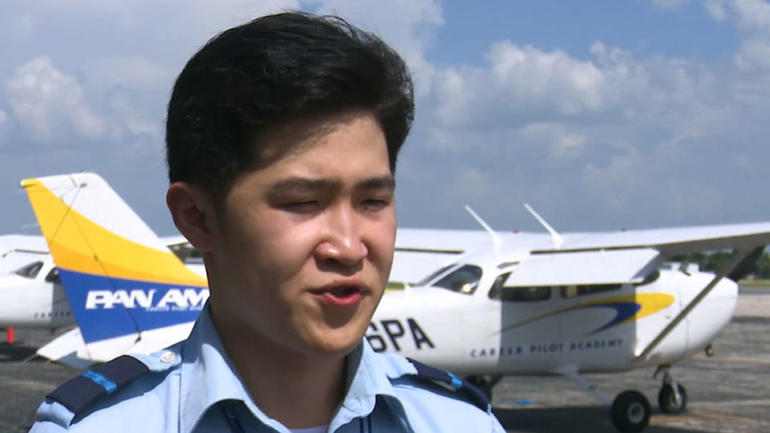At least one profession might be above trade wars and all the political noise. Chinese students are still coming to train at U.S. flight schools, despite tensions related to the U.S.-China trade war.
“To get a visa was not difficult for me. I am here for one purpose, I’m just here to finish my training. So all I need is to contact school, get my I-20, go to the embassy and just apply for my visa. It’s not difficult. I just follow the rules,” says Tiankai Xu, a Chinese student studying at Pan Am flying school in Kissimmee, Florida
Mark Johnson, the chief operation officer of the school Tiankai attends says his business is running normally and they are getting many inquiries from Asian students.
For Tiankai Xu, who is only 26, job hunting is not a real concern. An international pilot shortage is expected to continue for years to come – with the airline industry projecting it will need more than 800 thousand new pilots over the next twenty years.
“It’s a unique time in the aviation training business”, explains Mark Johnson, “especially with the shortage of pilots, it’s created kind of a perfect storm associated with many pilots retiring, new aircraft introduction, and general growth of the aviation industry. It creates a lot of demand for training and training services which is our focus in business.”
China is leading that demand for pilots and it doesn’t have enough schools to train them. Tiankai Xu, who goes by Kai, is funding his own career at a price tag of almost 90-thousand dollars.
“China has different kind of pilot program. It’s really different because for me, I am a self-sponsored student, and pay my own money to come here and be a pilot 319 But some airlines hire a pilot in China, they sign a contract with the company and then they send them here to become a pilot.”
For many Asian students, the U.S. is a more affordable option. US-based schools like PanAM offer efficient and comprehensive training for pilots while also providing a good environment to learn English, the de facto international civil aviation language. They also have options for students to become flight instructors — to ease the financial costs of attaining the 15-hundred flight hours needed to become a commercial pilot…Kai’s dream.
Tiankai Xu has a few more years to go to reach the hours needed to become a commercial pilot. A bright career is ahead of him, fed by both sides of the China-U.S. relationship.
 CGTN America
CGTN America

